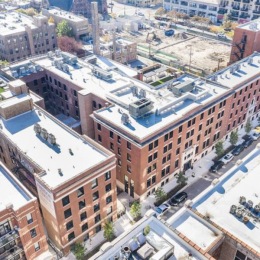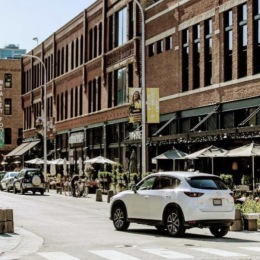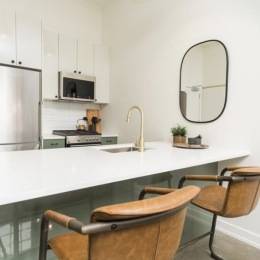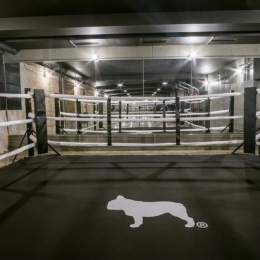The Loft Life: Understanding This Unique Apartment Style
What is a Loft Apartment?
A loft apartment is a large, open living space with minimal interior walls, typically converted from former industrial or commercial buildings. These unique homes feature soaring ceilings, oversized windows, and exposed architectural elements like brick walls and ductwork.
Key features of loft apartments:
- Open floor plan with few or no interior walls
- High ceilings ranging from 10 to 17 feet
- Large windows providing abundant natural light
- Industrial elements like exposed brick, beams, and pipes
- Spacious layouts often 1,000+ square feet
- Flexible living space that can be customized to your needs
There's something endlessly fascinating about living in a space that wasn't originally designed to be a home. Loft apartments emerged in the 1960s when artists in New York City began converting abandoned warehouses and factories into live-work studios. What started as a necessity for creatives seeking large, light-filled spaces has evolved into one of the most sought-after apartment styles in urban areas.
These converted industrial buildings retain their original character while offering modern living amenities. The result is a home that blends raw, industrial history with contemporary comfort - creating what many consider the perfect canvas for urban living.
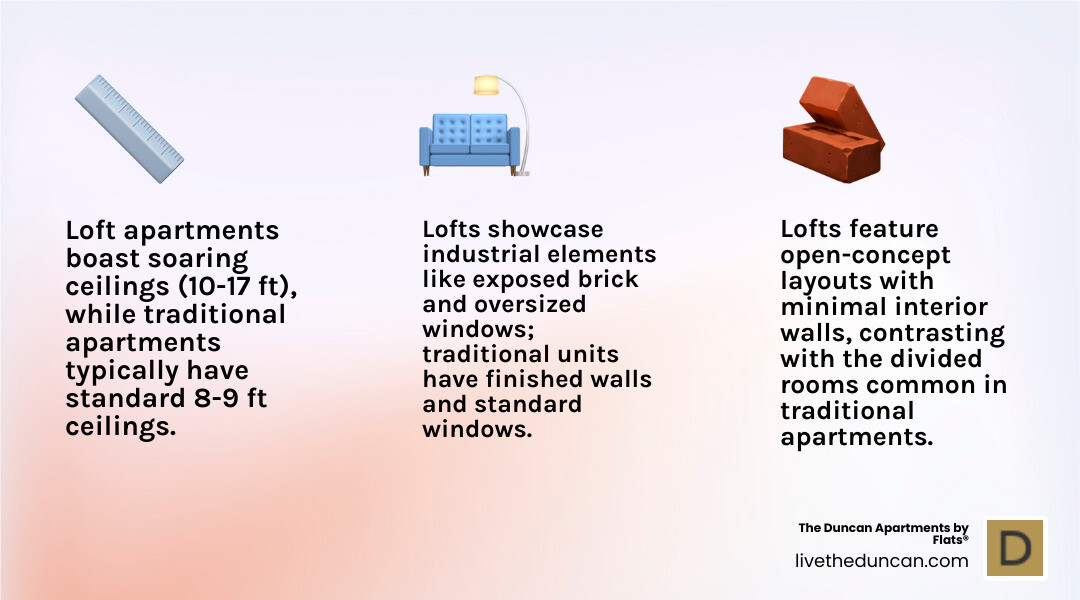
The Defining Characteristics of a Loft
The moment you walk into a loft apartment, you'll immediately notice what makes these spaces so special. It's that feeling of openness and freedom that comes from standing in a room where the walls don't box you in – because there simply aren't many walls to begin with.
Open floor plans are the heart and soul of loft living. Unlike traditional apartments with their maze of separate rooms, lofts accept wide-open spaces with minimal interior walls. You might find a wall or two around the bathroom, but beyond that, your living room flows seamlessly into your dining area, which connects naturally to your bedroom space. This creates an incredibly flexible layout where you can arrange your furniture and define your living zones exactly how you want them.
Then there are those gloriously high ceilings – typically ranging from 10 to 17 feet tall. While most apartments make do with standard 8 or 9-foot ceilings, lofts soar overhead, creating an immediate sense of grandeur and space. These towering ceilings don't just look impressive; they make even a smaller loft feel expansive and airy.
The oversized windows are another signature feature that sets lofts apart. These aren't your typical apartment windows – they're often massive, industrial-sized openings that were originally designed to light factory floors. The result? Abundant natural light that floods your space throughout the day and offers stunning views of the city beyond.
What really gives loft apartments their distinctive personality are the industrial elements that tell the story of the building's past life. Exposed brick walls add warmth and texture, while visible ductwork and structural beams remind you that this space once hummed with manufacturing activity. The floors – whether they're original hardwood or polished concrete – complete the authentic industrial aesthetic that can't be replicated in newer buildings. More info about our apartment features.
What are the common features of a loft apartment?
Loft apartments typically offer something most city dwellers can only dream of: spacious layouts that often exceed 1,000 square feet. To put that in perspective, many lofts are three or four times larger than a typical studio apartment, giving you room to breathe, create, and truly make the space your own.
The unique architectural details found in these converted spaces are like living pieces of history. Think massive support beams that once held up factory equipment, original brickwork that's weathered decades of city life, and sometimes even repurposed freight elevator doors that now serve as striking design elements. This rustic charm simply can't be manufactured – it's earned through years of authentic use.
These features make lofts perfect for live/work arrangements. The tradition started with artists who needed large, well-lit spaces for their studios and found that converted warehouses fit the bill perfectly. Today, that same flexibility appeals to anyone who works from home, whether you're setting up a home office in one corner or dedicating an entire section to your creative pursuits.

What is the difference between a hard loft and a soft loft?
Not all loft apartments are created equal, and understanding the difference between hard lofts and soft lofts can help you find the perfect fit for your lifestyle.
Hard lofts are the real deal – authentic converted industrial buildings like old warehouses, factories, and commercial spaces that have been transformed into homes. These spaces wear their history proudly, with original exposed brick walls, concrete floors that still bear the marks of heavy machinery, and ductwork that actually served the building's industrial purpose. The authentic historical character of hard lofts means you're living in a piece of the city's past, complete with quirks like uneven floors or unusual layouts that reflect the building's original function.
Soft lofts take a different approach. These are new construction buildings designed from the ground up to capture the loft aesthetic without the industrial baggage. They feature the same high ceilings and open layouts you'd expect, but with modern finishes and contemporary conveniences. Think brick veneer instead of original masonry, and decorative exposed beams rather than structural necessities.
The choice between them presents a trade-off: hard lofts offer distinct character and authenticity, while soft lofts provide the loft look with modern finishes and community amenities like fitness centers, rooftop decks, and concierge services. Both have their appeal, depending on a preference for living in history versus enjoying a loft-style design with modern conveniences.
The Evolution of Loft Living: A Brief History
The story of loft apartments is a fascinating journey, deeply connected to how our cities grow and change, and the spirit of creative people. Their unique charm wasn't planned; it grew organically from a simple need.
The beginnings of loft apartments can be traced mostly to the 1960s and 1970s in New York City. At this time, many factories and commercial buildings became empty, especially in areas like SoHo and Tribeca.
Artists, always looking for big, bright spaces for their work, started moving into these vacant industrial buildings. The huge open areas and oversized windows of old warehouses and factories were perfect for painting large artworks, building sculptures, and even putting on performances. What began as a smart solution for artists quickly turned into a thriving cultural movement. These spaces became busy hubs of creativity and a symbol of a free-spirited lifestyle.
Living in these converted industrial spaces wasn't always allowed at first. The buildings weren't officially zoned for homes, so people often lived there under business leases. But so many artists and residents moved in that it eventually led to big changes in city planning and laws. This time, when artists repurposed old buildings, is a great example of how culture can truly shape a city. More information on this topic is available in works like Loft living: culture and capital in urban change.
The growing popularity of loft apartments also played a part in wider city trends like urban renewal. As these once-gritty industrial areas became highly desired, more people and businesses were drawn to them. This led to a lively change of neighborhoods, turning former manufacturing zones into vibrant places to live and work.
A key moment for loft apartments in New York City was the creation of the Loft Law in 1982. This important law was made to help tenants who were living in commercial buildings that weren't meant for homes. It made residential loft living legal, made sure these spaces met home safety rules, and gave tenants important protections. Updates to the Loft Law in 2017 made these protections even stronger. This legal framework has kept residents safe and protected their rights, while also preserving a special part of city history.

Loft vs. Studio: Understanding the Key Differences
When you're searching for your ideal urban home, you might hear a lot about both "loft" and "studio" apartments. Both offer an open-concept vibe, but they're actually quite different! Knowing what sets them apart is key to finding the perfect fit for your lifestyle.
One of the biggest distinctions you'll notice right away is size. Loft apartments are almost always much more expansive, often starting at 1,000 square feet and sometimes stretching to 2,000 or more. This means you get a truly generous amount of space to spread out! Studio apartments, on the other hand, are typically cozier, averaging around 600 square feet or sometimes even less.
Then there are the ceilings. Loft apartments are famous for their soaring heights, often reaching 10 to 17 feet. This comes from their history as converted industrial buildings, which needed tall ceilings for machinery. Imagine all that vertical space! Studio apartments usually have standard ceiling heights, around eight or nine feet. While still comfortable, they don't offer that dramatic, airy feeling a loft does.
The layout is also a key difference. Both are open, but a true loft apartment might have unique features like a raised sleeping area or a mezzanine level, which adds an extra dimension to the space without fully enclosing it. You'll find very few interior walls, usually just for the bathroom. A studio apartment is essentially one big room where your kitchen, living area, and sleeping space all share the same open floor, with only the bathroom as a separate, enclosed space.
When it comes to aesthetic, loft apartments really accept an industrial-chic look. Think exposed brick, visible ductwork, and massive, warehouse-style windows. It's a look that tells a story! Studio apartments, while they can be decorated in any style, typically have a more conventional or modern residential feel since they're usually built specifically as apartments, not converted from old factories.
Finally, let's talk about practicalities like privacy and upkeep. Because loft apartments are so open, privacy can be a bit limited, especially if you're sharing the space. You might need to get creative with room dividers! Studios also offer limited privacy due to their single-room nature, but their smaller size often makes it easier to define zones with furniture. In terms of keeping things tidy, a larger loft apartment can take more time to clean, and the sheer volume of space can be more challenging to heat or cool. A studio, being smaller, is generally quicker to maintain.
To give you a quick overview, here's a table summarizing the main differences:
| Feature | Loft Apartment | Studio Apartment |
|---|---|---|
| Size | Typically 1,000+ sq. ft. (often 3-4 times larger than studios) | Typically ~600 sq. ft. or less (some micro-apartments are 400 sq. ft.) |
| Ceiling Height | High ceilings, usually 10-17 feet (sometimes vaulted) | Standard ceilings, typically 8-9 feet |
| Layout | Open floor plan with minimal interior walls; often includes exposed elements; may have a raised mezzanine | Single open room combining living, sleeping, and kitchen areas; separate bathroom |
| Origin/Aesthetic | Converted industrial buildings; industrial-chic, rustic, urban aesthetic; exposed brick, pipes, beams | Purpose-built residential buildings; conventional, modern, or any design style |
| Natural Light | Abundant, thanks to oversized, warehouse-style windows | Varies, often standard-sized windows |
| Privacy | Limited due to open layout; may require creative partitioning | Limited due to single-room layout |
| Upkeep | Can be more challenging to heat/cool due to large volume; cleaning a large space takes more time | Easier to maintain and clean due to smaller size; heating and cooling are typically more manageable |
Understanding these key differences will help in deciding which type of open-concept living is most suitable. To explore options, view different layouts at The Duncan.
Is Loft Living Right for You? Pros, Cons, and Decorating Tips
Deciding if a loft apartment is the perfect fit means looking at its special benefits alongside any potential challenges. This unique way of living truly appeals to those who love open spaces, character, and being right in the heart of the city.
The Pros of Loft Living
A big plus for loft apartments is the amazing sense of creative freedom they offer. Imagine a wide-open canvas where you can design your living space without being boxed in by traditional walls. This flexibility means you can set up your home exactly how you like it. Need a big area for a home office? Done! Want a cozy spot for movie nights? Easy.
Another huge benefit is the incredible natural light. Those oversized windows, a key feature of loft apartments, let sunshine pour in. This creates a bright, airy feeling. When you combine all that light with the high ceilings, you get a spacious atmosphere that feels anything but cramped.
The unique character and style of loft apartments are also a big draw. With their exposed brick, visible ducts, and industrial touches, these homes have a personality you won't find anywhere else. They offer a cool twist on typical apartments, perfect for those who appreciate a blend of history, architecture, and modern city life.
The Cons of Loft Living
While living in a loft apartment sounds amazing, there are some practical things to think about. One common issue is limited storage space. Many original hard lofts, because they were once factories or warehouses, don't have built-in closets. This means you'll need to get clever with storage solutions, maybe using tall shelves or multi-purpose furniture to keep things tidy.
Energy Efficiency and Climate Control can also be a factor. Those large, open spaces and big windows, especially in older buildings, aren't always the best at retaining heat or cool air. Heating or cooling a loft apartment can be more demanding than a standard apartment because you're managing a much larger volume of air.
Privacy can be a concern in a loft apartment. The open layout means there are usually very few private rooms beyond the bathroom. This can be tricky if you have roommates or even if you're a couple looking for more secluded personal space. Sometimes, even bathrooms might not have traditional doors, requiring some creative solutions for privacy. Plus, those beautiful big windows, while great for light, might lack privacy if they face other buildings or busy streets.
The open design of lofts can also lead to more noise. Sound tends to echo in large, open spaces with hard surfaces, so conversations or music can travel easily. Outside noise from the city can also be more noticeable through bigger, older windows. If your upstairs neighbor loves tap dancing, a loft apartment might not be the quietest choice!
Lastly, especially in older, hard lofts, you might find fewer built-in amenities compared to newer apartment buildings. While a new soft loft might have a pool or fitness center, a converted hard loft often focuses more on its unique history and less on extensive shared facilities.
How to Decorate a Loft Space
Decorating a loft apartment is a fantastic chance to show off your personal style. The huge, open space needs smart planning to create distinct areas and make it feel cozy and welcoming.
Here are some decorating tips:
- Use rugs to define zones: Area rugs are perfect for grounding furniture and clearly marking out different areas like the living room, dining space, or bedroom within your open floor plan.
- Vertical storage solutions: To make up for less built-in storage, use those high ceilings! Think tall bookshelves, open clothing racks, or floor-to-ceiling shelving units.
- Large-scale furniture: To match the generous size of a loft apartment, pick bigger furniture pieces. Oversized sofas, large dining tables, and big art pieces will fill the space nicely without looking too small.
- Room dividers: If you want more privacy, try using freestanding dividers, tall shelves, decorative screens, or even curtains. Some people even use large plants or fish tanks to create soft divisions!
- Industrial-style lighting: Accept the industrial look with lighting fixtures that fit the space. Oversized pendant lights, track lighting, or unique sculptural lamps can add both light and style.
- Cohesive color palette: To keep your open space feeling connected, choose a color scheme that flows throughout the entire loft apartment. You can add splashes of color with accessories and art.
- Mix materials and textures: Blend the raw industrial elements with softer touches. Think plush rugs, comfy fabrics, and warm wood tones to create a balanced and inviting home.
- Highlight architectural features: Let that exposed brick, those beams, and visible ducts be part of your decor. Use lighting to draw attention to these features and make them part of your overall design.
- Creative use of space: Don't be afraid to think outside the box! Can a corner become a cozy reading nook? Can a wall become a gallery for your art? The possibilities are endless!
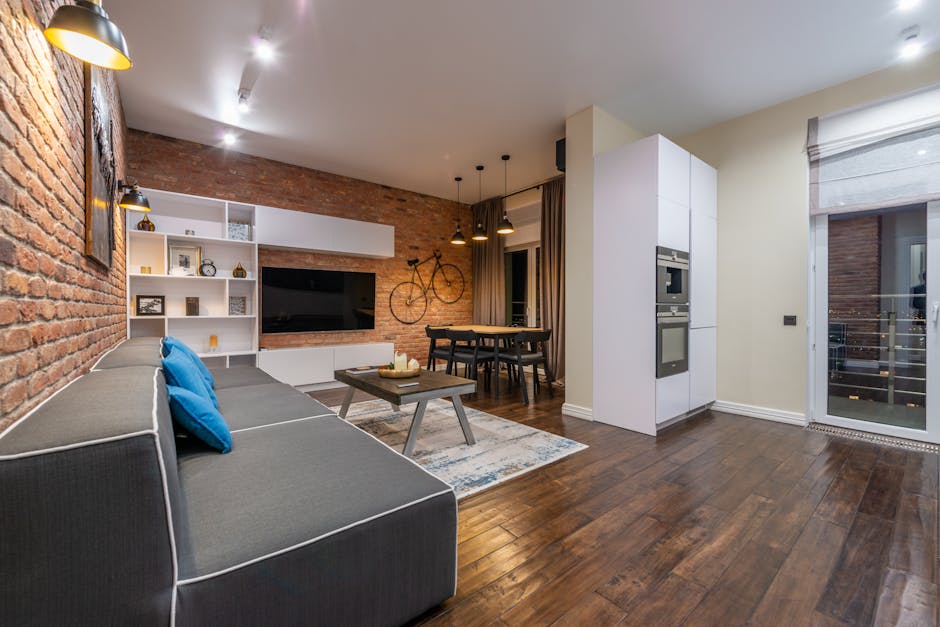
For inspiration, explore the photo gallery.
Frequently Asked Questions about Loft Apartments
Questions often arise about loft apartments due to their unique characteristics. Below are answers to some of the most common inquiries.
Where can you typically find loft apartments?
If you're dreaming of a loft apartment, you'll want to set your sights on major urban centers. These unique homes are predominantly found in areas that were once busy industrial or manufacturing districts. Think old warehouses, factories, and commercial buildings that have been lovingly given a new lease on life.
In a city like Chicago, for example, you'll find a wonderful concentration of loft apartments in neighborhoods like the West Loop. This area has transformed from its meatpacking district past into a dynamic hub, brimming with art galleries, chic boutiques, and delicious restaurants – making it a top spot for loft living. Similarly, iconic neighborhoods in New York City, like SoHo and Tribeca, are famous for their loft apartments, having started their lives as manufacturing centers.
These converted spaces are often the heart of arts districts or areas undergoing exciting urban renewal. It's where the architectural character of the past is not just preserved, but reimagined for modern living. The demand for these distinctive spaces in dense city environments continues to grow, cementing their status as a defining feature of urban life. Chicago's West Loop neighborhood is a perfect example!
What are the legal considerations for loft apartments?
When you fall in love with a loft apartment, especially one that's a true "hard loft" conversion, it's wise to be aware of some important legal considerations. Since many of these unique homes started their lives as commercial or industrial buildings, specific zoning laws are in place to ensure they can be legally and safely used as residences.
One super important document to look for is the Certificate of Occupancy. This document confirms that the loft apartment unit, and the building it's in, meets all the necessary building codes and zoning rules for residential living. It certifies that the space is a legal and code-compliant residence. Back in the day, many artists famously lived in these buildings without proper certification, which could lead to safety issues or even evictions.
A fantastic example of how cities have addressed these conversions is the NYC Loft Law. First passed in 1982 and updated in 2017, this law was a huge step in making loft apartments legitimate residential spaces in New York City. It helped bring illegally converted lofts up to residential standards and protected tenants. The Loft Law set a precedent for how commercial spaces could be legally transformed into homes, ensuring code compliance and tenant rights. While every city has its own specific rules, the spirit of laws like the NYC Loft Law often guides regulations elsewhere, always with the goal of creating legal, code-compliant, and comfortable living conditions for everyone.
Find Your Ideal Loft-Style Home
Loft apartments offer a truly special blend of history, vast space, and unique style. They appeal to anyone looking for a distinctive urban living experience. These homes began as practical industrial spaces and have grown into highly sought-after residences. They truly embody creative freedom and connect you to the lively heart of city life.
The open layout, towering ceilings, and industrial charm of a loft apartment create an amazing blank canvas for personalized living. This style of home allows you to design your space exactly how you like it. Whether you love the true, historical feel of a hard loft or the modern comforts of a soft loft, this apartment style gives you a huge, light-filled environment. It’s perfect for both relaxing and getting your creative juices flowing.
For those who love the unique look and spacious feel of a loft apartment but also want modern comforts and great amenities, communities like The Duncan in Chicago's West Loop are a fantastic choice. The Duncan offers stylish apartments that capture the true essence of loft living. You get all the conveniences of a top-notch residential building, including an indoor pool and a rooftop lounge.
Spacious floor plans and an excellent location near Chicago’s best attractions mean residents can truly accept the loft lifestyle with added comfort. A home like this can be an inspiration.
Consider the open layout and industrial charm for a future home. To see what living in a loft apartment entails, explore West Loop loft rentals and find an inspiring space.



